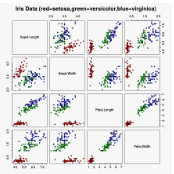Iris-based identification systems are among the most popular approaches for person identification. Such systems require good-quality segmentation modules that ideally identify the regions for different eye components. This paper introduces the new two-headed architecture, where the eye components and eyelashes are segmented using two separate decoding modules. Moreover, we investigate various training scenarios by adopting different training losses. Thanks to the two-headed approach, we were also able to examine the quality of the model with the convex prior, which enforces the convexity of the segmented shapes. We conducted an extensive evaluation of various learning scenarios on real-life conditions high-resolution near-infrared iris images.
翻译:以爱丽丝为基础的识别系统是最常见的身份识别方法之一,这种系统需要高质量的分解模块,最好能确定不同眼睛组成部分的区域。本文介绍了新的双头结构,即使用两个不同的解码模块对眼睛组成部分和眼睫进行分解。此外,我们通过采用不同的培训损失来调查各种培训设想方案。由于采用双头方法,我们还能够用之前的曲线来检查模型的质量,这种模型可以强化分解形状的共性。我们广泛评估了各种关于现实生活状况的学习情景,即近红外线图像的高分辨率。




